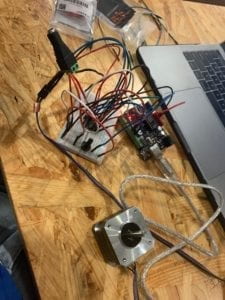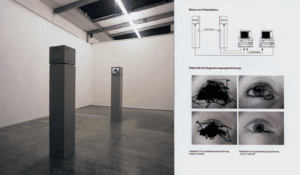This week during recitation, the task was to build a drawing machine and a potentiometer circuit. However, I only got to build the potentiometer this time and ran out of time. While building the potentiometer circuit, it was interesting to control the movement of the stepper motor with the potentiometer. Even though I didn’t get to build the drawing machine, I got the idea of how it works by controlling the motors from steps 1-2, as well as observing others, who seemed to have a hard time drawing by controlling the circuit.
Question 1:
What kind of machines would you be interested in building? Add a reflection about the use of actuators, the digital manipulation of art, and the creative process to your blog post.
I would be interested in building an interactive clock and portray a story. The actuators would be stepper motors to control the clock’s hands appointing different times/parts of the story. I want to create a story based on a person/specific event and how it changes over time with the use of the clock. In addition, I want to create a mini film to go along with the clock so every time the user turns the clock hands, there would a supplemental art component to add to the telling of the story.
Question 2:
Choose an art installation mentioned in the reading ART + Science NOW, Stephen Wilson (Kinetics chapter). Post your thoughts about it and make a comparison with the work you did during this recitation. How do you think that the artist selected those specific actuators for his project?
I chose the Eye2eye project by Angelika Böck which demonstrates physical intimate interactions with machines. It reminded me of a pupil sensor at my office that I worked at this summer. It opened gates for people who have registered a photocopy of their irises. It reminded me of how this type of technology is similar to the Eye2eye project which also focuses on interactions with eyes. It scares me at times because of how advanced the technology was at little things such as tracking people’s eyeball movements. But also, I liked the technology over the summer because it was very convenient to enter the office instead of swiping a card. The work I did this recitation also had to do with movements, but more computing from computer to paper. Whereas the eye2eye project focused more on the pupil rather than ‘hand movements’. But it’s still similar in a way because it is computing from computers to physical interactions as apart of the body. I think Böck selected the actuators for her project similar to the stepper motor we used, but since she wanted to focus on eye movement, the motors focused on tracking movements. I think it was a very interesting project and I am curious to see how the author want to further develop the project (maybe) in the future.

